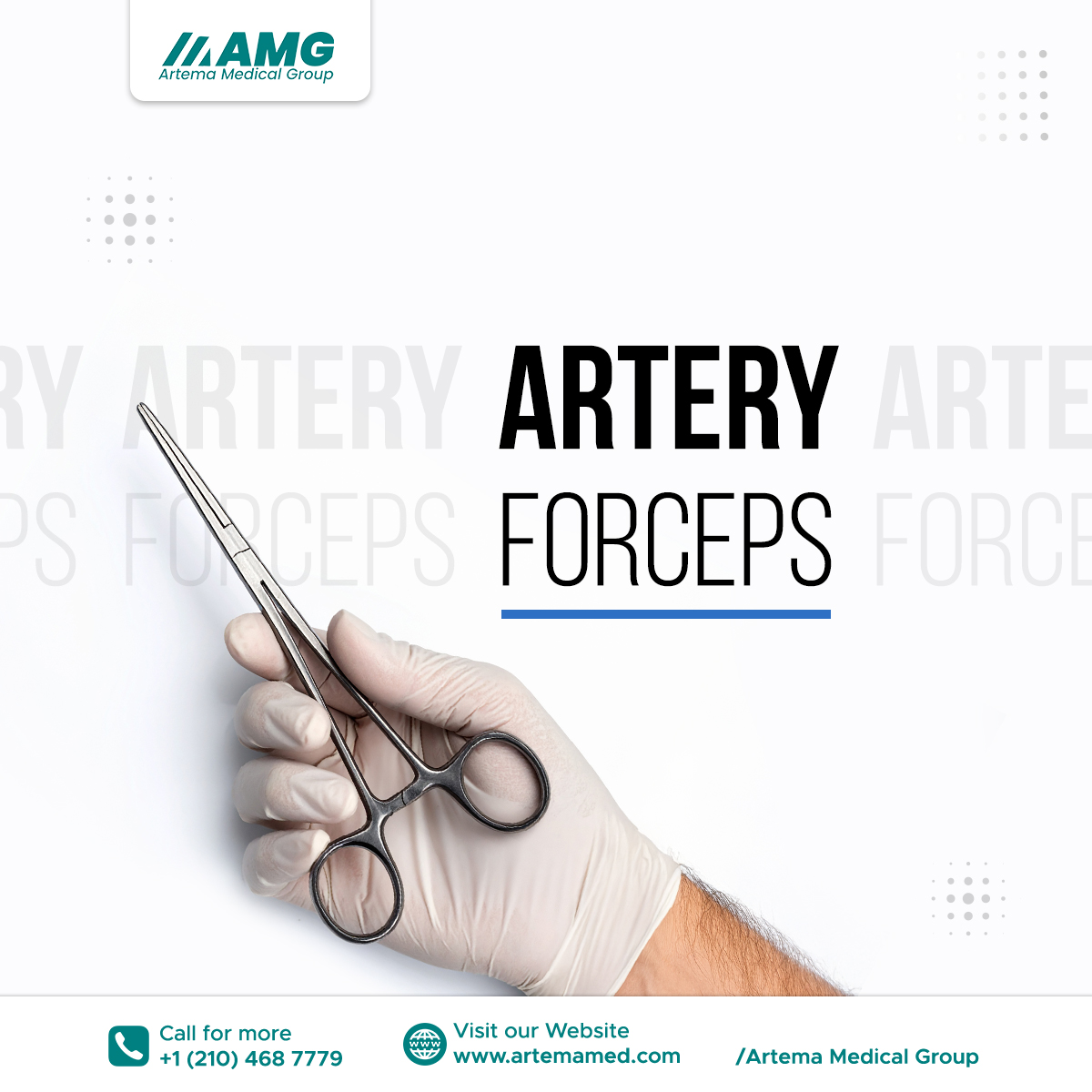Introduction to Artery Forceps
Artery forceps are vital tools used in surgery and medical procedures. They are designed to clamp blood vessels and help control bleeding. Their importance in the medical field has grown over time, making them a key part of surgical instruments. The use of artery forceps is common in almost all types of surgery, from minor procedures to complex operations. Their design allows surgeons to perform tasks with accuracy and safety.
Controlling Bleeding During Surgery
The most important use of artery forceps is to stop bleeding. During surgery, blood vessels may be cut, and this can lead to bleeding. Artery forceps are used to clamp these vessels and prevent blood loss. This gives the surgeon a clear view of the area and helps maintain a safe environment for the patient. By applying pressure to the vessel, artery forceps stop the flow of blood and reduce the risk of complications. This makes the use of artery forceps essential in all surgical settings.
Holding Tissues and Vessels in Place
Another common use of artery forceps is to hold tissues or blood vessels in place. During surgery, parts of the body need to be moved or held aside to reach deeper areas. Artery forceps provide the grip needed to secure these tissues without causing damage. This allows the surgeon to work with better access and control. Different types of artery forceps are available to help with different tasks, depending on the size and location of the tissue being held.
Assisting in Suturing and Stitching
Artery forceps are also used to assist in stitching and suturing wounds. When tying off blood vessels or closing a wound, forceps help guide the needle and thread through the correct area. Their firm grip allows for more precise movements, especially in small or tight spaces. Surgeons often use artery forceps to pull the suture through the tissue and tie secure knots. This makes the stitching process smoother and safer for the patient.
Removing Foreign Bodies and Debris
In some cases, artery forceps are used to remove unwanted objects or debris from wounds. This is especially useful in emergency rooms or during trauma care. If a wound contains glass, metal, or dirt, the surgeon or nurse can use artery forceps to remove the objects gently. This helps clean the wound and prepare it for further treatment. The firm grip of the tool allows for careful removal without causing further harm to the area.
Holding Surgical Sponges and Materials
During a procedure, surgeons often need to clean or soak up blood using sponges. Artery forceps are used to hold these sponges, making it easier to place them inside the surgical area. This use of artery forceps helps maintain cleanliness and improve visibility. The surgeon does not have to touch the sponge directly, which keeps the operation more sterile. This function also saves time and effort during long surgeries.
Useful in Emergency Situations
In emergency situations, speed is very important. Artery forceps play a key role in these moments. Whether in a hospital or in the field, these tools help control bleeding quickly. Paramedics and trauma teams often use artery forceps to clamp vessels or wounds until the patient can receive full care. Their design makes them easy to use and effective even under pressure. The quick use of artery forceps can save lives in critical moments.
Supporting Medical Training
Artery forceps are also useful in medical training. Students and new surgeons practice using these tools to develop their skills. Learning how to hold, clamp, and release tissues with artery forceps is part of surgical education. Different types of artery forceps are introduced during training so that students can learn the use of artery forceps in various situations. This hands-on experience builds confidence and ensures better patient care in the future.
Types of Artery Forceps for Specific Tasks
There are several types of artery forceps used for different procedures. The straight forceps are used in open areas, while curved ones help reach deeper spots. Mosquito forceps are smaller and ideal for fine work. Larger types such as Rochester forceps are used for bigger vessels. Each type serves a specific purpose and allows the surgeon to choose the best tool for the task. Knowing the types of artery forceps helps make operations more efficient and safe.
Advantages of Reusable Design
Artery forceps are usually made from stainless steel and can be reused after cleaning. This makes them a cost-effective tool in hospitals and clinics. They can be sterilized and used again without losing quality. This also reduces waste and supports a cleaner environment. The design of the tool is strong and lasts for many years, making it a reliable choice for all surgical teams.
Used Across Medical Fields
The use of artery forceps is not limited to one type of surgery. They are used in general surgery, orthopedic surgery, dental procedures, and even in veterinary care. Their simple yet effective design makes them useful in many medical fields. This wide range of uses shows how important artery forceps are in daily medical practice. Their presence in nearly every surgical kit speaks to their value and trust among professionals.
Conclusion: A Trusted Tool in Modern Medicine
Artery forceps are more than just a basic surgical instrument. Their many uses make them one of the most trusted tools in medicine today. From controlling bleeding to holding tissues and aiding in stitching, they play a key role in every operation. Knowing the different types of artery forceps helps choose the right one for each task. Whether in a major hospital or a small clinic, the use of artery forceps ensures safe, clean, and efficient surgical care. As medical technology continues to grow, artery forceps remain a timeless part of surgical success.
For more info visit Artema Med
